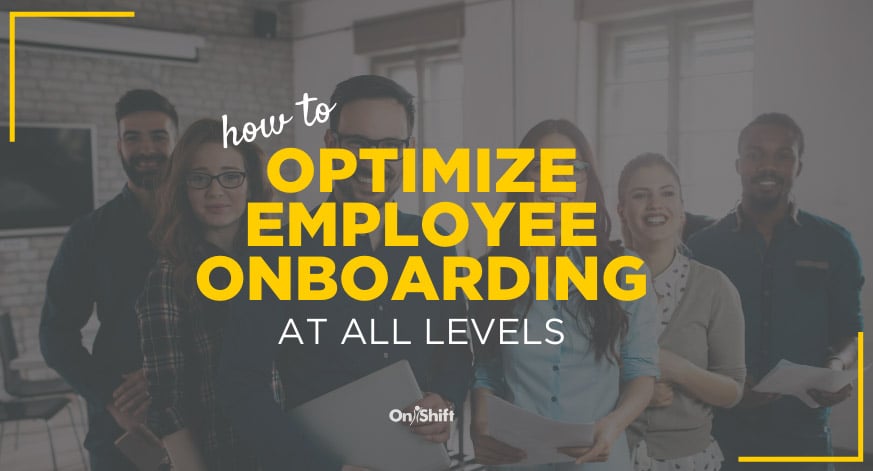November 22, 2019 | Jenna Berris
November 22, 2019 | Jenna Berris
 Turnover is still top of mind for organizations as we inch closer to 2020. And while no one seems to have discovered the magic bullet to solve it, many are looking to their onboarding process as a way to help curb it.
Turnover is still top of mind for organizations as we inch closer to 2020. And while no one seems to have discovered the magic bullet to solve it, many are looking to their onboarding process as a way to help curb it.
While many organizations recognize the importance of onboarding, a recent Harvard Business Review article notes that a concerted effort toward onboarding at all levels is essential in supporting a workforce for success. Whether you are refining your current processes or doing a full-blown overhaul, here are some best practices to work in to make onboarding new hires, regardless of role or rank, effective at your community.
Give a wow-worthy welcome. Many companies do not begin onboarding until the employee’s first day even though there is plenty of preparation that can be done in advance of a new hire’s start date— at all levels in an organization. Communication by phone, snail mail or email can set the tone for the onboarding process and can indicate to a new hire that a company is organized and prepared for a smooth transition. I’ve heard of providers sending a welcome note saying how excited they are to have them join the team, which is a great, simple way to show you care and boost engagement early.
It’s also smart to have new employees complete the necessary forms at home or online beforehand, rather than bogging them down with paperwork on their first day.
When they arrive on their first day, roll out the red carpet – literally (we know one provider who does!) or figuratively. The new hire dashboards in OnShift Engage tell supervisors when each employee is scheduled to start, so you can greet them appropriately on their first day. Our first-week onboarding checklist can help you create an education, engaging – and most importantly, fun first few days on the job.
Spur successful adoption of your systems. Technology platforms that deploy content and communications to new employees can help ensure a smooth onboarding, but incorporating technology training as part of the onboarding process can be another critical element in terms of ensuring employees have the tools they will need be successful in their jobs. Training employees on any systems and platforms will make them feel supported as they learn how to use them. For example, make sure they download and are comfortable using their scheduling app so they know when and where they work, how to request PTO and pick up open shifts at your community.
Keep close tabs during the first three months. Remember, 40% of all turnover in senior care happens during the first 90 days. Providers must pay special attention to this group if they want to retain them long-turn. We recently released New Hire Surveys in OnShift Engage that help organizations do just that. Employees receive automated surveys during key points of the onboarding process – 7, 14, 30, 60 and 90 days after their start date – where they are asked to rate statements and provide optional feedback, either anonymously or choosing to identify themselves.
Supervisors can then take the feedback they receive to identify and correct any issues early and prevent new hires from turning over, as well as measure the effectiveness of their onboarding and training programs.
And don’t just pause outreach when they hit the 90-day mark. Keep communication lines open with tools like automated pulse satisfaction surveys and regular recognition for hard work. Be sure to also work career goals into conversations to start building a path for newer employees at your community.
Gear onboarding to “personas” within the organization. The Harvard Business Review shares the story of one organization that identified “personas” for each of its employee classes and geared its onboarding individually to each one. The personas were wage earners, individual contributors, people leaders and executives, and the onboarding resources were customized accordingly. For senior care organizations that are simultaneously onboarding caregivers, clinical staff and managers, creating separate journeys and standards can help provide an effective onboarding experience for employees of all types.
Having a structured and effective onboarding process is critical for all senior care employees – from caregivers to supervisors to executives. It’s those providers that use onboarding to educate, acclimate and engage that will see less turnover, better employee performance and of course, happy, well-cared for residents.
Subscribe to the OnShift Blog
Recent Posts
Categories
About Jenna Berris
Jenna Berris is a Content Marketing Manager for OnShift.
See for yourself why thousands of providers rely on OnShift’s innovative software for recruitment, hiring, workforce management, pay and engagement. Request your personalized demo today.
